
Hex Mayflies
Hexagenia limbata
The famous nocturnal Hex hatch of the Midwest (and a few other lucky locations) stirs to the surface mythically large brown trout that only touch streamers for the rest of the year.
Featured on the forum

This is a striking caddis larva with an interesting color pattern on the head. Here are some characteristics I was able to see under the microscope, but could not easily expose for a picture:
- The prosternal horn is present.
- The mandible is clearly toothed, not formed into a uniform scraper blade.
- The seems to be only 2 major setae on the ventral edge of the hind femur.
- Chloride epithelia seem to be absent from the dorsal side of any abdominal segments.
Based on these characteristics and the ones more easily visible from the pictures, this seems to be Grammotaulius. The key's description of the case is spot-on: "Case cylindrical, made of longitudinally arranged sedge or similar leaves," as is the description of the markings on the head, "Dorsum of head light brownish yellow with numerous discrete, small, dark spots." The spot pattern on the head is a very good match to figure 19.312 of Merritt R.W., Cummins, K.W., and Berg, M.B. (2019). The species ID is based on Grammotaulius betteni being the only species of this genus known in Washington state.
- The prosternal horn is present.
- The mandible is clearly toothed, not formed into a uniform scraper blade.
- The seems to be only 2 major setae on the ventral edge of the hind femur.
- Chloride epithelia seem to be absent from the dorsal side of any abdominal segments.
Based on these characteristics and the ones more easily visible from the pictures, this seems to be Grammotaulius. The key's description of the case is spot-on: "Case cylindrical, made of longitudinally arranged sedge or similar leaves," as is the description of the markings on the head, "Dorsum of head light brownish yellow with numerous discrete, small, dark spots." The spot pattern on the head is a very good match to figure 19.312 of Merritt R.W., Cummins, K.W., and Berg, M.B. (2019). The species ID is based on Grammotaulius betteni being the only species of this genus known in Washington state.

Troutnut is a project started in 2003 by salmonid ecologist Jason "Troutnut" Neuswanger to help anglers and
fly tyers unabashedly embrace the entomological side of the sport. Learn more about Troutnut or
support the project for an enhanced experience here.
Male Stenonema ithaca (Light Cahill) Mayfly Dun Pictures
Based on the identical size, shape, and relative proportions of different body parts, I'm pretty sure this dun is of the same species as two spinners I collected at about the same time. The color is dramatically different, but that's to be expected with many of these species in the transition from dun to spinner.
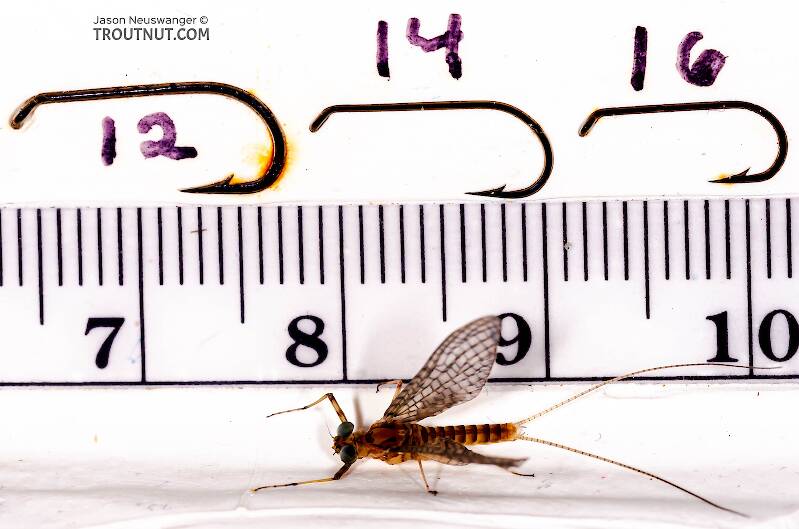
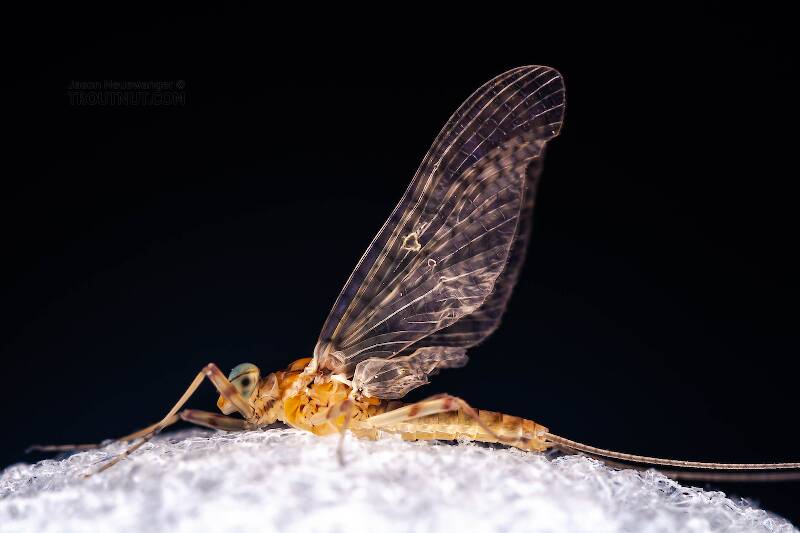
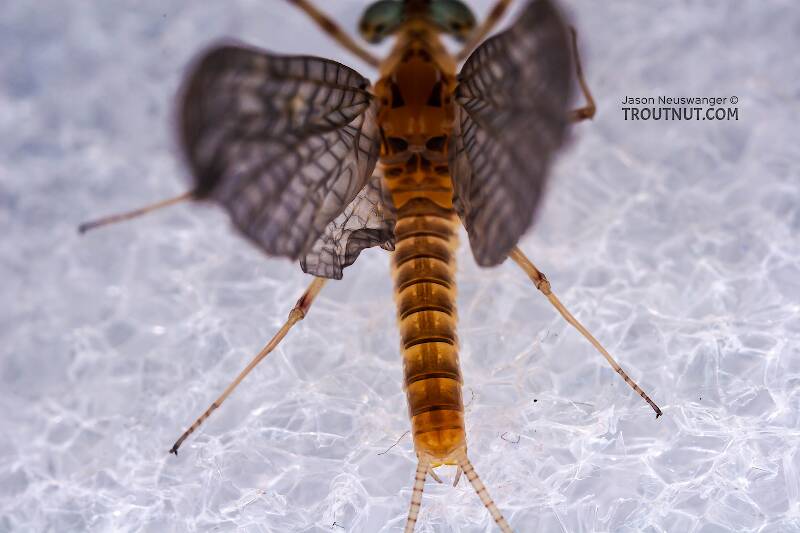
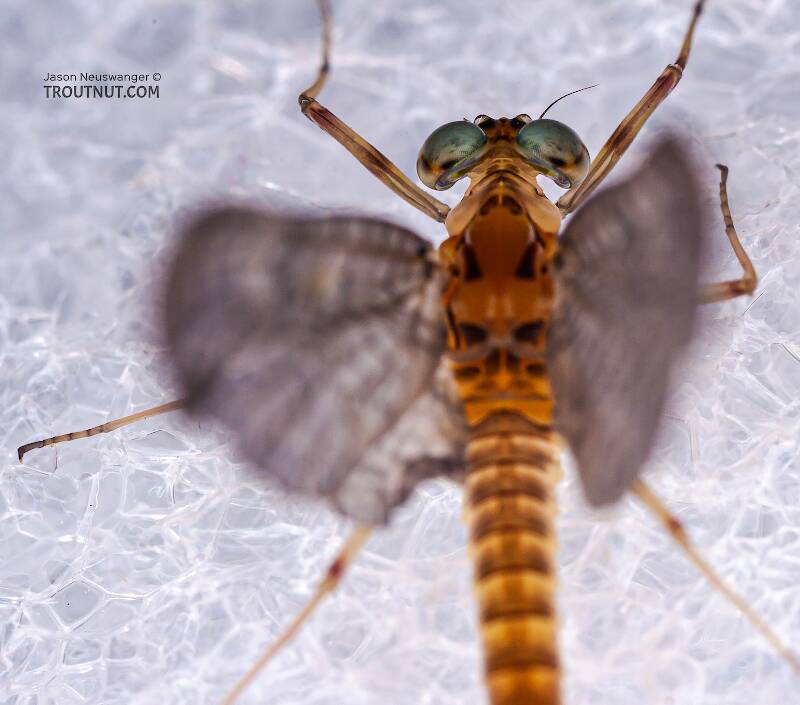
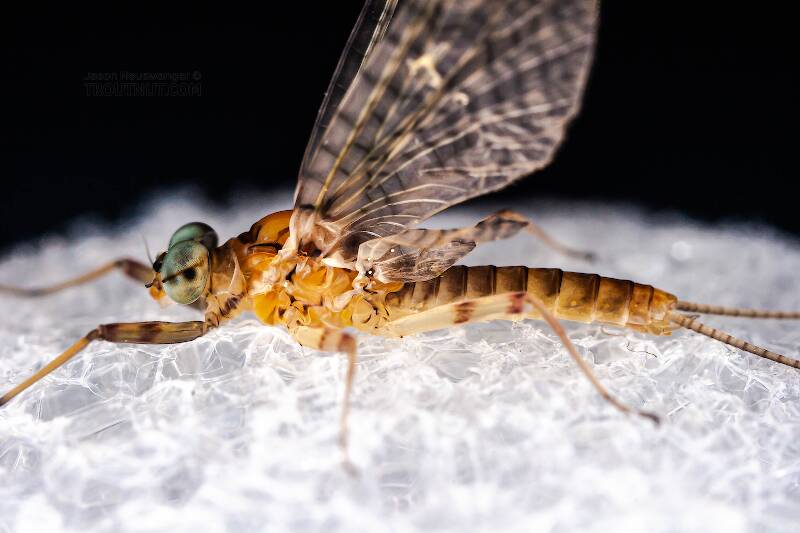
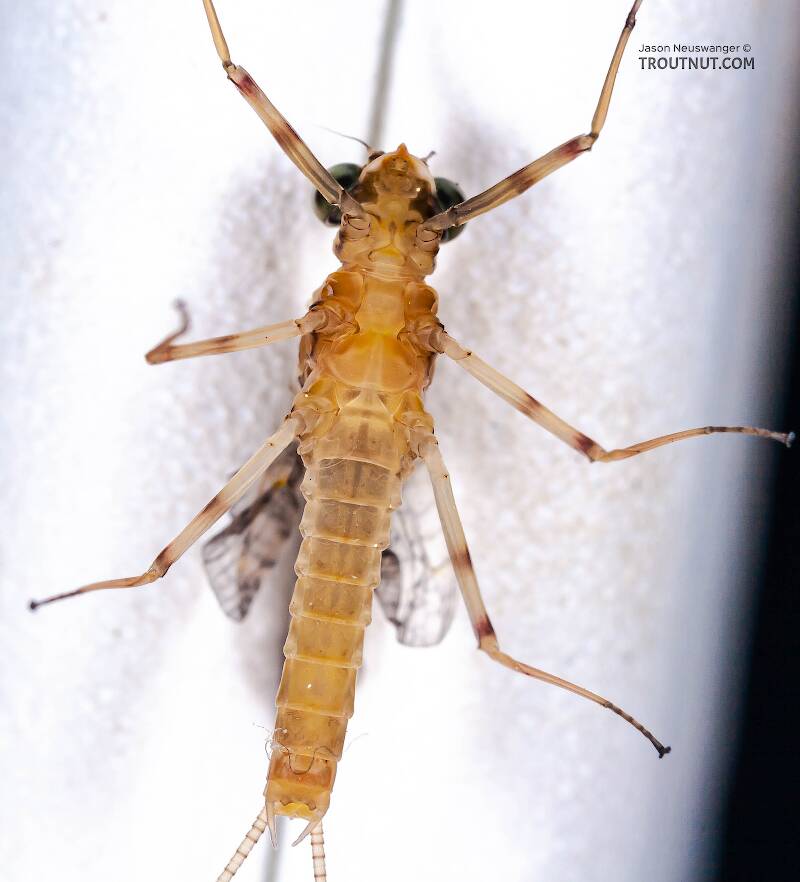
This mayfly was collected from the West Branch of the Delaware River in New York on June 7th, 2007 and added to Troutnut.com by Troutnut on June 8th, 2007.
Discussions of this Dun
Cahills
12 replies
Posted by Dryfly on Jun 5, 2010
Last reply on Jun 11, 2010 by Wiflyfisher
Do Cahills ever come off in enough numbers for a rise to occur? Around here, they trickle off annoyingly, and never get much trout attention.I am wondering about this, cause I saw some spinners at a DQ last night. Are they ever real important?
Start a Discussion of Dun
References
- Merritt R.W., Cummins, K.W., and Berg, M.B. 2019. An Introduction to the Aquatic Insects of North America (Fifth Edition). Kendall/Hunt Publishing Company.
Male Stenonema ithaca (Light Cahill) Mayfly Dun Pictures
Collection details
Location: West Branch of the Delaware River, New York
Date: June 7th, 2007
Added to site: June 8th, 2007
Author: Troutnut
Date: June 7th, 2007
Added to site: June 8th, 2007
Author: Troutnut

